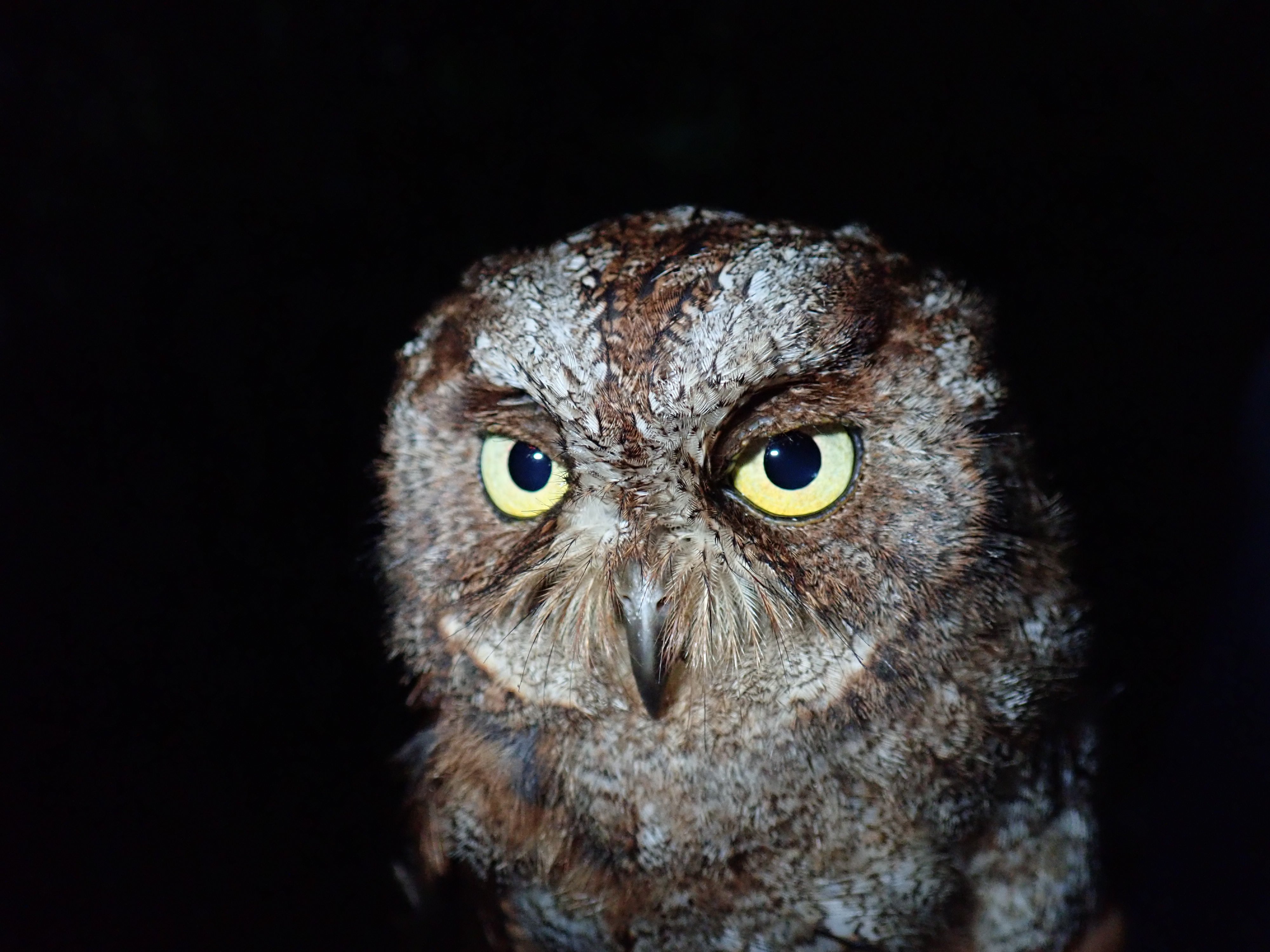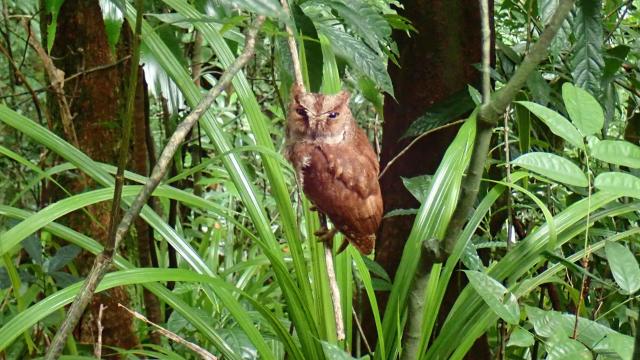Bird alert: Scientists formally described a previously obscure species of owl this week. And, good news, it’s a flying meme-generator that sounds like a newborn puppy. Sadly, this special owl is already likely critically endangered.
The small, brown, nocturnal bird — named the Príncipe scops owl or Otus bikegila — dwells on the island of Príncipe off of Africa’s western coast, in the Democratic Republic of São Tomé and Príncipe. Testimony about the owl from locals on the island dates back to 1928, and scientists initially proposed that it might be a distinct species in 2016. But now, for the first time, there is definitive proof.
Researchers published a study documenting their findings on Otus bikegila in the journal ZooKeys. Through a combination of specimen collection, call analysis, and DNA sequencing, they established that the petite owl is unique to its island home. It shares a most recent common ancestor with both the neighbouring São Tomé scops owl and the African scops owl, which is widespread on the continent’s mainland. But through millennia of isolation, Otus bikegila transformed.
Owl in Repose
Compared with its relatives, the new species has longer wings and a larger bill.
‘Eep’ Owl
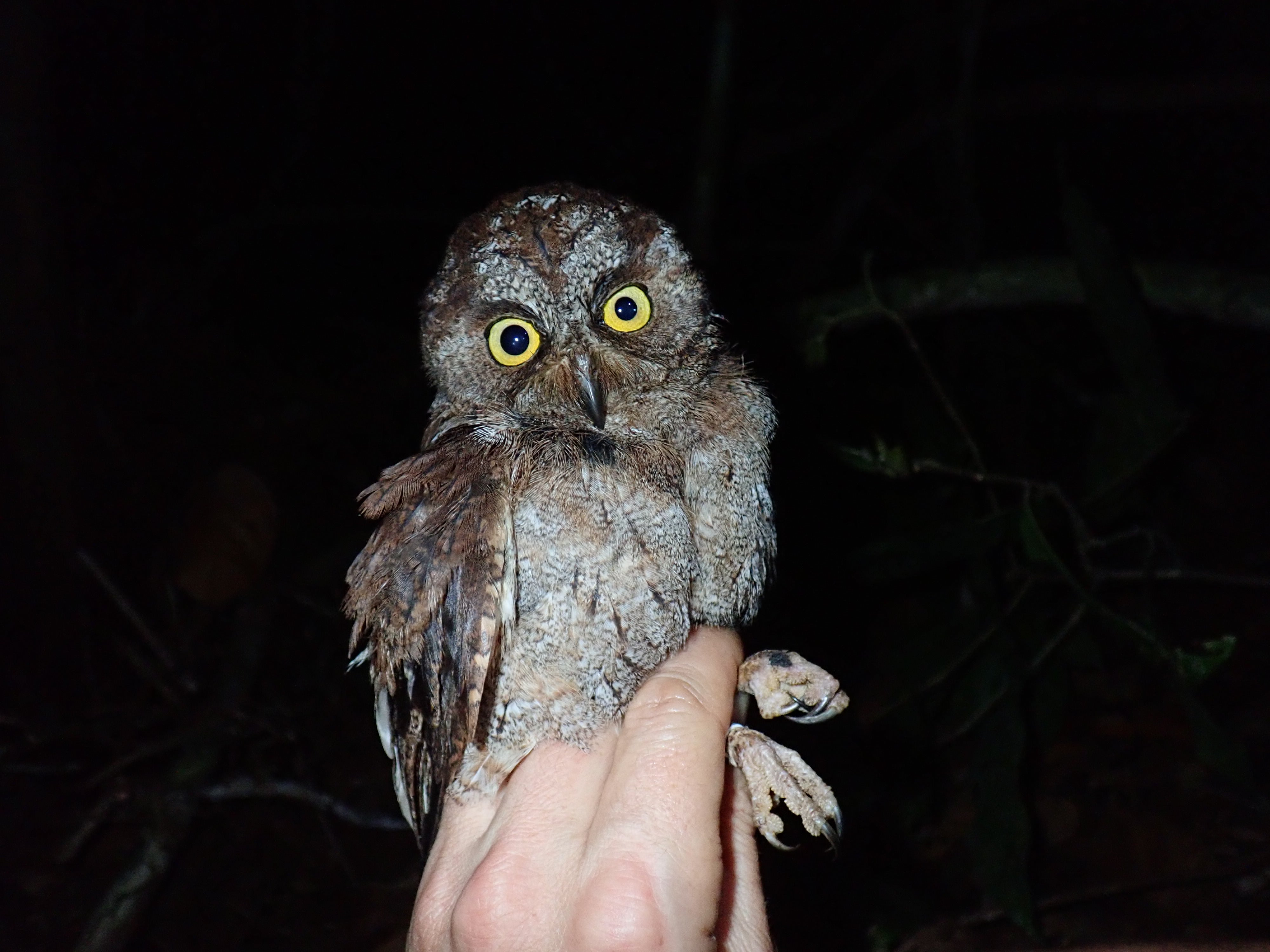
The Príncipe owl’s genetic code diverged enough to be distinguishable from other owls in its genus. And its call went from a haunting, shrill bark to a softer, cutesy peep.
Very Mysterious Owl

As it turns out, that peep was central to the owl’s discovery and classification as a unique species.
Martim Melo, the new study’s lead researcher and a evolutionary biologist at the University of Porto in Portugal, first heard and recorded the distinctive, repetitive call in 2002. Four years earlier, a local parrot harvester named Ceciliano do Bom Jesus (nicknamed “Bikegila”) had told Melo about large-eyed birds living inside tree holes.
After that, the sound recordings were the evidence needed to trigger biological surveys. The calls were unlike that of any other known species.
‘Oh no’ Owl

Owl calls are genetically encoded, not learned, explained Melo in an email to Gizmodo. The animals recognise each other, communicate, and find mates though their calls. If two birds speak different languages, they are unlikely to reproduce. So, a singular owl call generally means a singular owl species.
Príncipe Island

Unfortunately, the new owl is already in danger. The species is confined to just 3,700 acres, or less than 16 — an area about four times the size of Central Park. Its range lies entirely within the old growth forests of Príncipe Obô Natural Park on the island, and a section of its habitat is set to be affected by a planned dam construction.
Based on its small range on a single island and the limited number of individuals (1,000 to 1,500), the researchers proposed that the new species should be listed as Critically Endangered by the International Union for Conservation of Nature in a companion study published in the journal Bird Conservation International.
It’s good news that the owl lives in an already protected park, said Melo. But that protection must continue — for the newly described owl species but also for the wider ecosystem, he added. In addition to Otus bikegila, Príncipe is home to other species found nowhere else in the world.
Martim Melo + Owl
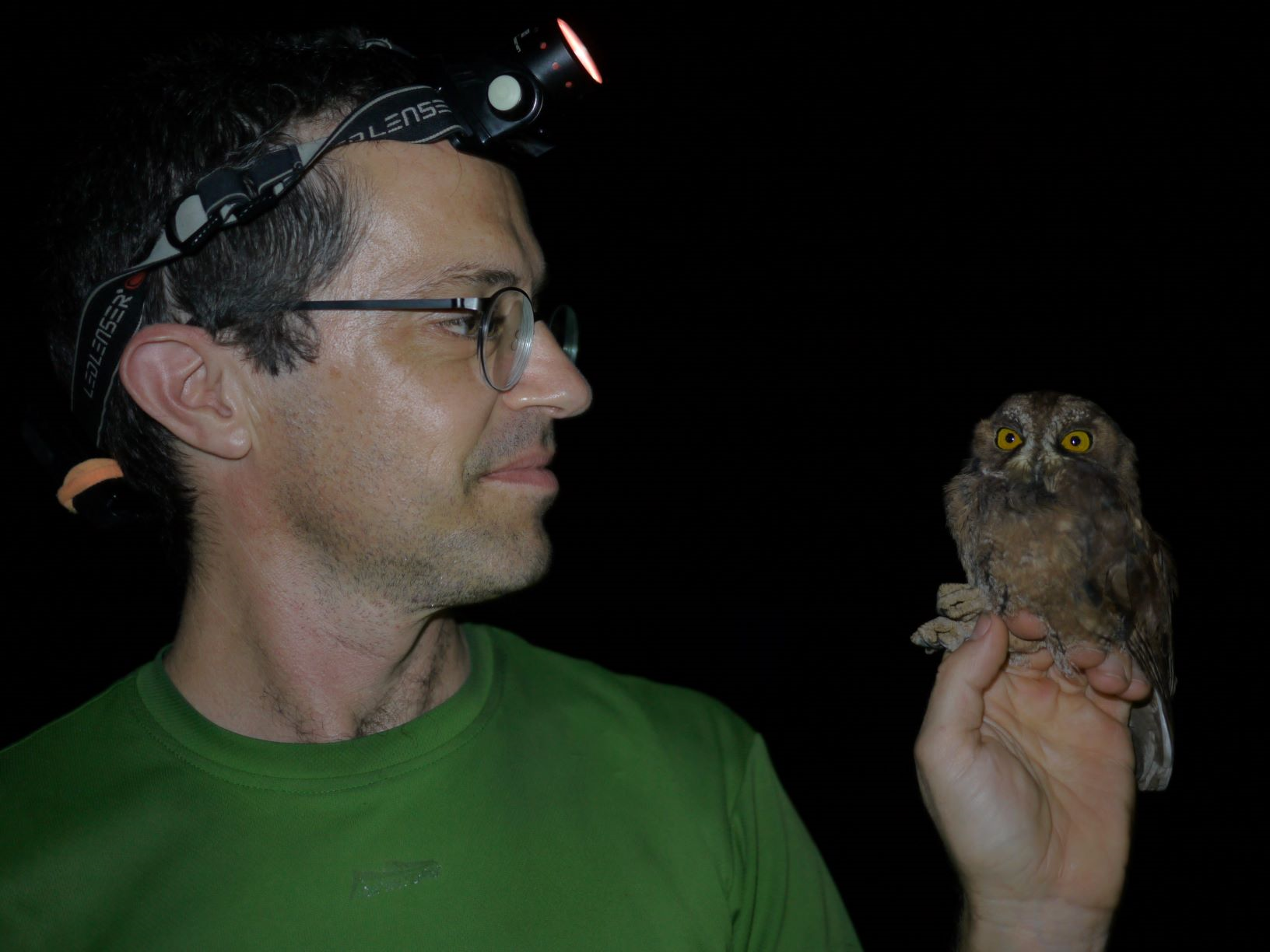
To Melo, one of the most fascinating things about the bird is how long it was able to hide from researchers. His and his colleagues’ genetic analysis uncovered that, of all the scops owl species living on nearby islands, the Príncipe scops owl was the earliest to diverge. Birds from the mainland arrived on Príncipe first.
Yet, somehow, the owl there was the last to be formally acknowledged by biology. “I had a first-hand experience of its elusiveness,” said Melo. “From my first suspicions of its existence in 1998, it took me 20 years to first set eyes on it!”
Researchers + Owl

Bom Jesus was once a parrot harvester but is now a park ranger and nature guide in Principe Obô Natural Park. In honour of his initial observations, invaluable local knowledge, and ongoing field assistance, Melo and colleagues named the owl bikegila, after Bom Jesus’ nickname. The formal name is also meant to acknowledge the often unrecognised contributions of Indigenous and local field guides in scientific research, said the study authors in a press release shared with Gizmodo.
Now, with all that important information out of the way, please enjoy a few bonus owl pics.
Unamused Owl
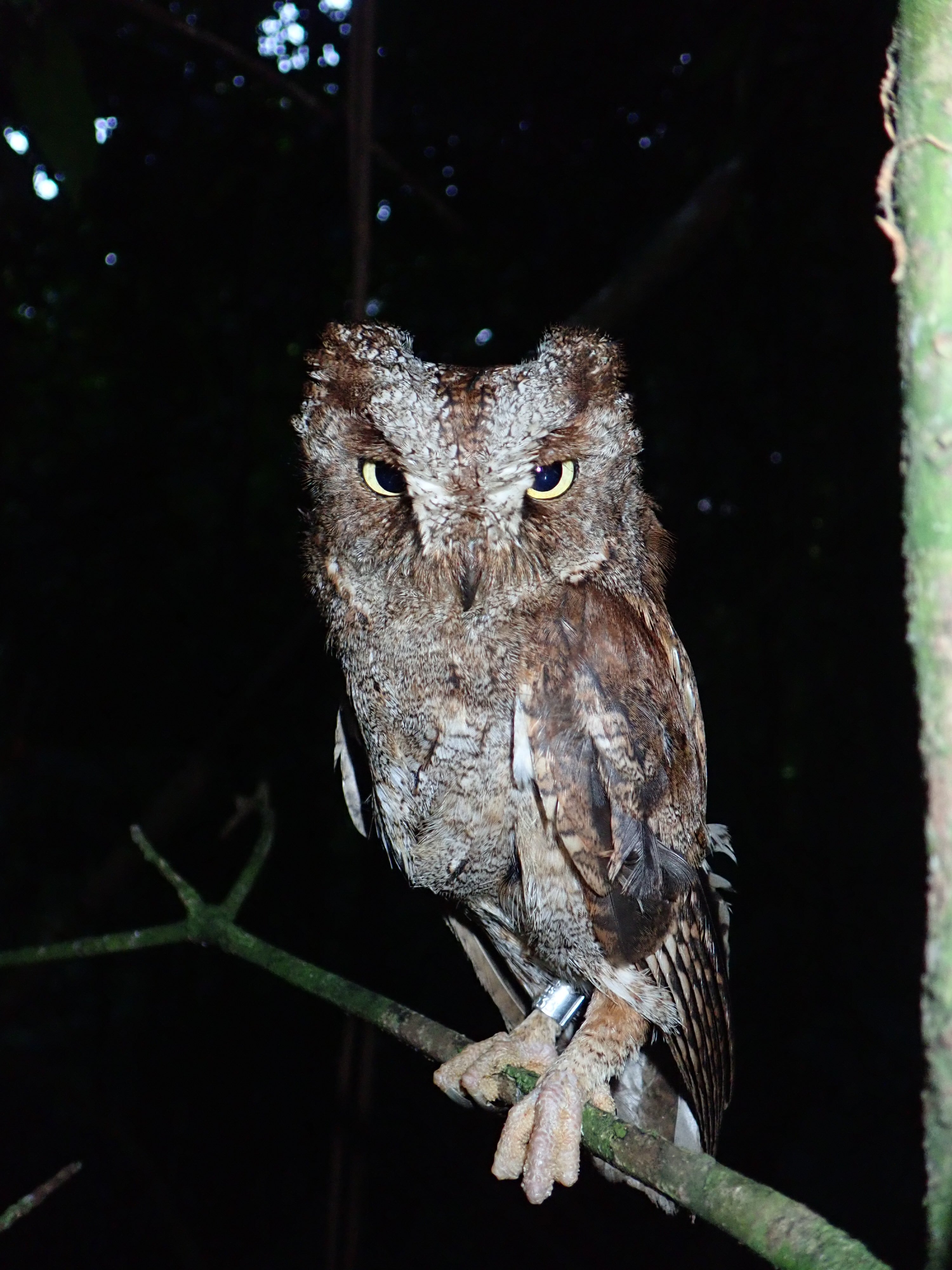
Alarmed Owl
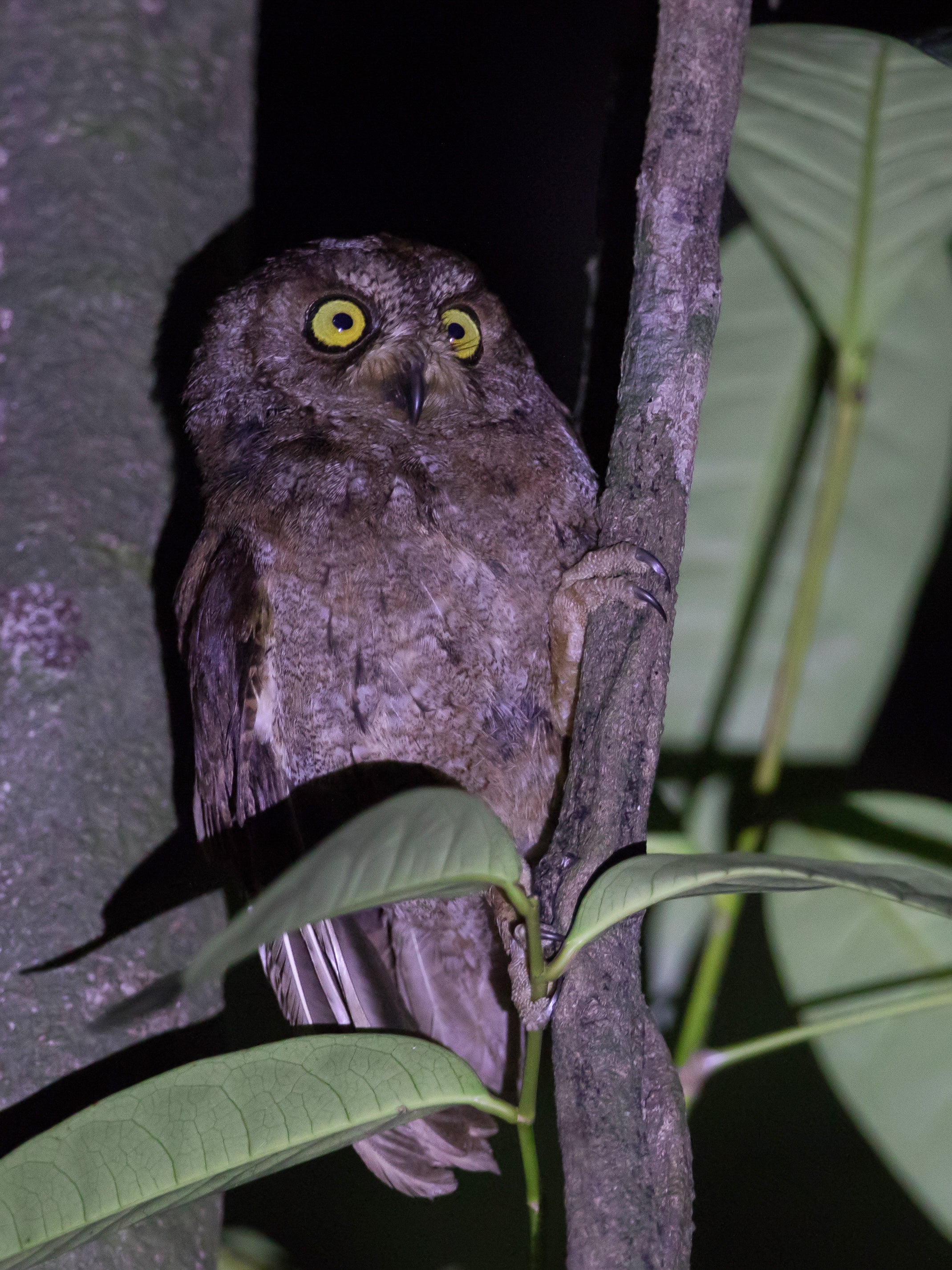
Album Cover Owl
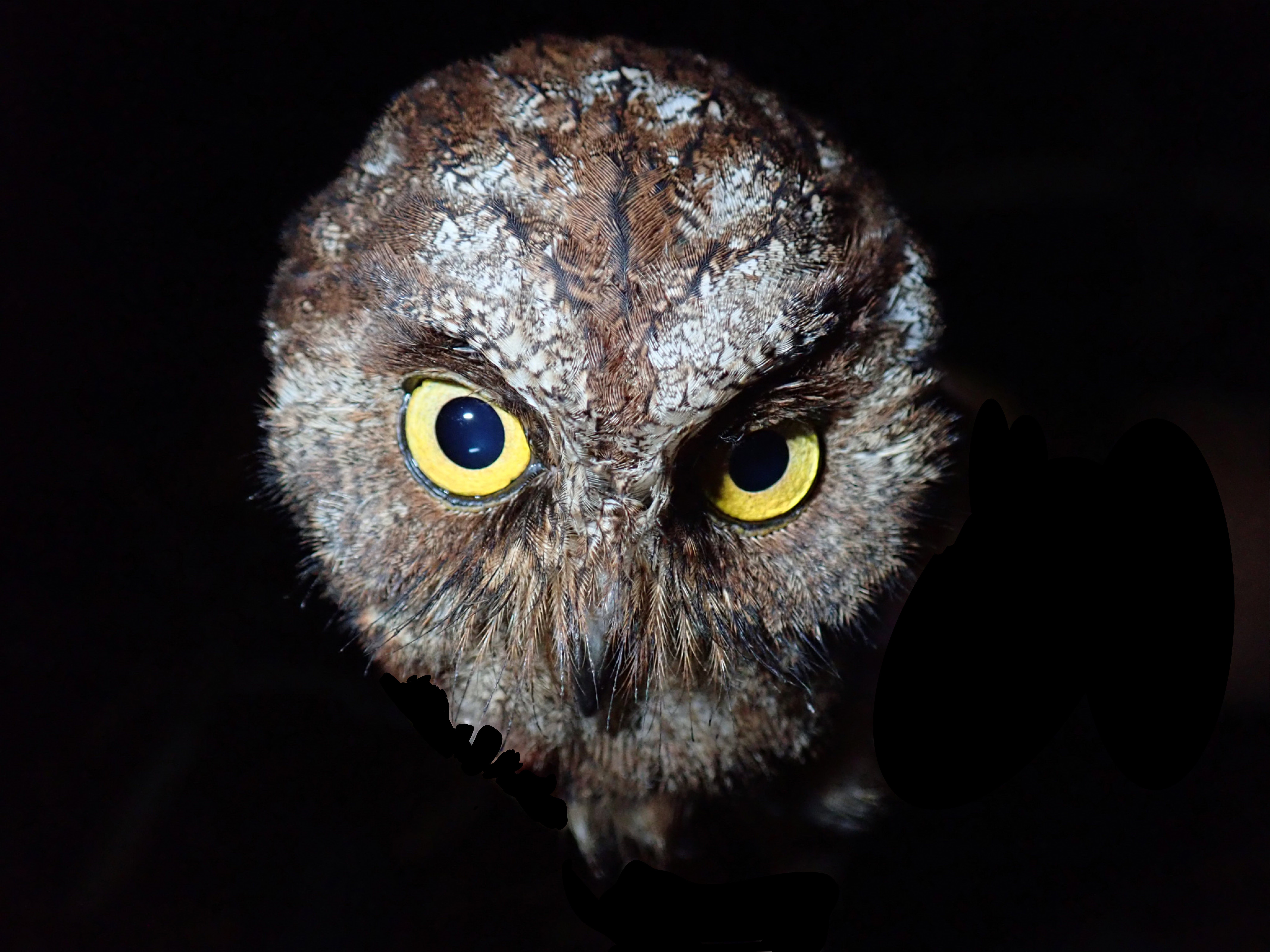
‘No Duh’ Owl
